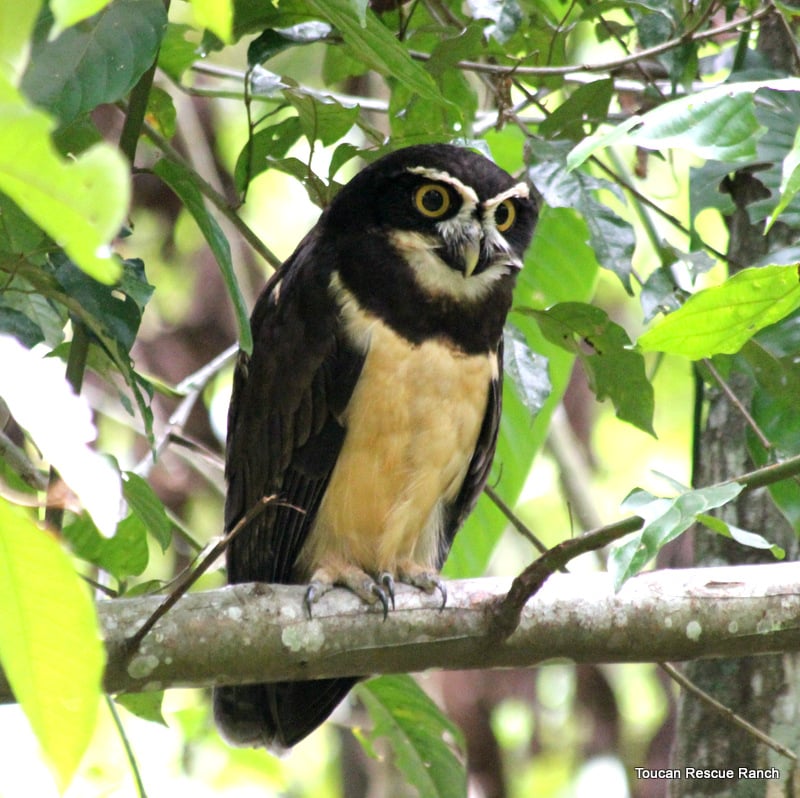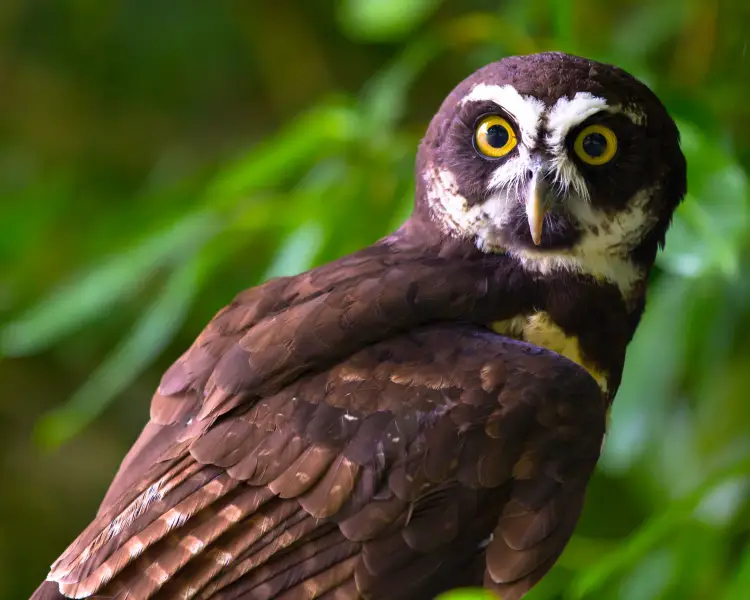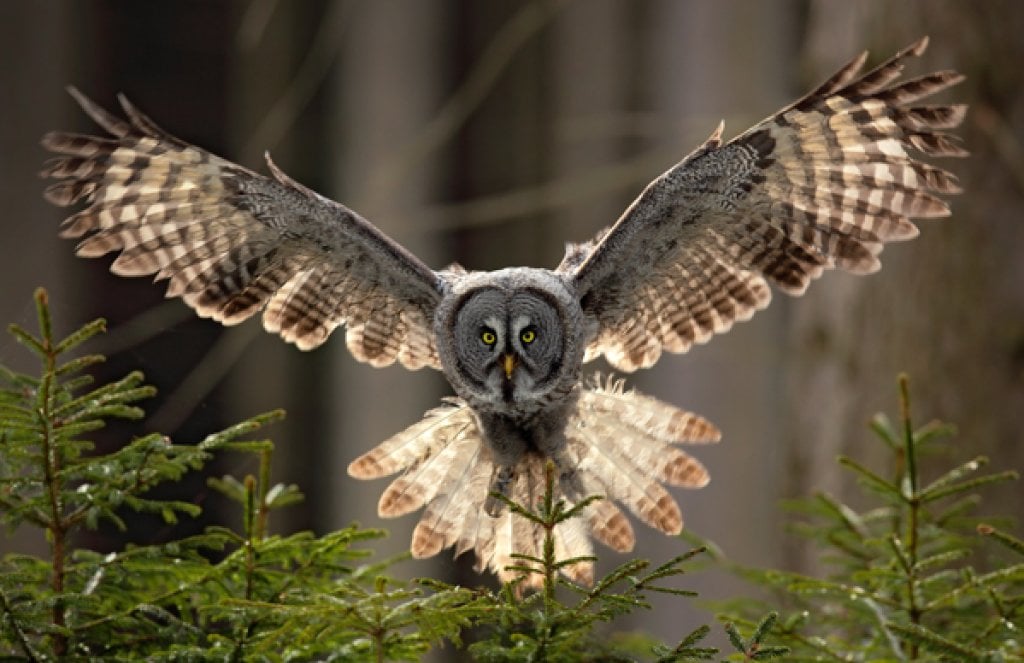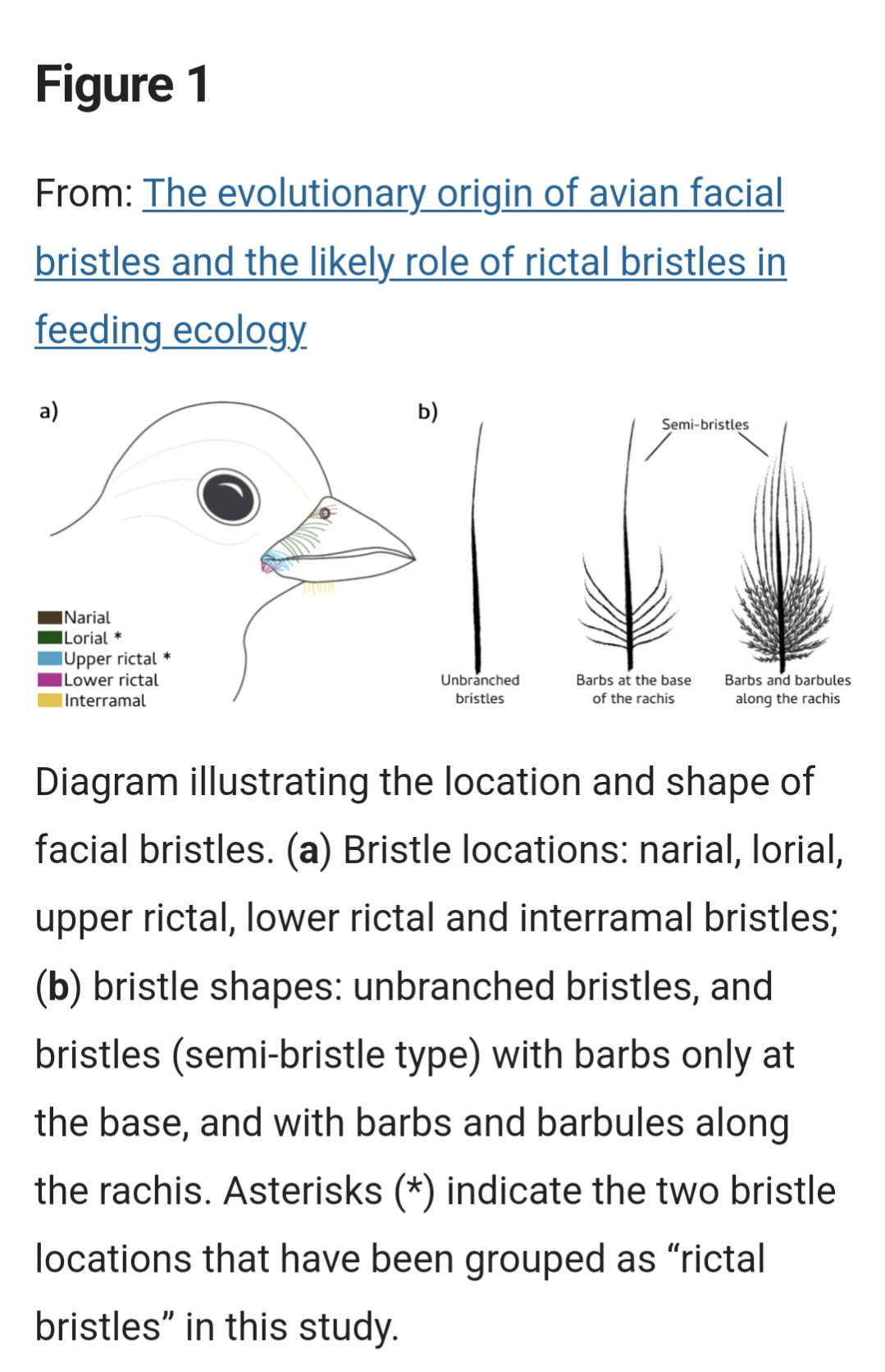This match features a pair of wise looking owls. Which one has the smarts to win today?
The Great Grey is the largest owl by overall length. Max length is around 33 inches, 84 cm, but actual mass is much less than the Blakiston’s or Eurasian Eagle, and even that of most Bubo owls like the Snowy, Great Horned, etc. It’s a real big fluffball! This thick winter coat is perfect for the coniferous taiga of the north, which is their preferred home. Even though they are found in Europe and Asia, they were not discovered until the 18th century in Canada. They have a less varied diet than most owls, eating mainly small rodents, but their massive facial disc maximizing the most tiny sounds, they can hear rodents under up to 2 feet, 60 cm, of snow!
The Spectacled Owl, while not the biggest owl in any continent, it is the largest tropical owl species at 20 inches, 52 cm, preferring the rainforests of Central and South America. It eats almost any mammal or can get its feet on, from rodents to bats, possums, crabs, snails, and even monkeys and sloths. With a wide range in habitats less hospitable for people, the Spectacled Owl has stayed relatively safe, though a species on Trinidad is now extinct due to encroachment in the rainforest there.
Which wise owl has captured your imagination? Is it the wise old Phantom of the North, the Great Grey, or the young, preppy looking Spectacled Owl? Upvote you choice now!
#superbowl #owloftheyear2024
Spectacled Owl



Great Grey Owl



A vote for Spectacled Owl because Great Grey is too scary-looking.
It’s interesting that they both have light colored/white feathers to the inside of their eyes.
I tried to look if that had a name or function.
The name looks to be the supercilium, which means eyebrow.
Much like the plumicorns, I only found what seemed like speculation as to their function: exaggerate expression for communication/warnings/mating, camouflage, reduce glare.
I found more on bird people saying they use the size, shape, and color to distinguish similar species moreso than anything it actually does for birds.
Wow the Great Grey Owl is just so classic Owl, but that Spectacled Owl looks like some Hawk + Owl Avatar animal mashup and I dig it.
+1 por Spectacled!
Specky! Yip yip!
I think I’m going to have to go with the Speccy. I mean, sure they Great Grey has those amazing . . . hypnotic . . . transfixing . . . eyes that . . . must . . vote . .for . . . AAhh! No. No, it’s spectacled.
Yeah. Spectacled. Okgottagothxbye
Speck’s doing well so far. I believe this is the opposite of how this went last time, but the GG is pretty divisive to those that can’t deal with the face:eyeball ratio.
What GG haters see:

+1 for Spectaled Owl
They are a very cool owl! I have yet to see a Great Grey in person, but I did get to meet a Spectacled back in 2018 at the Cincinnati Zoo.




That foot is massive!
Uh oh. I hope I don’t have to eventual choose between the Spectacled and the Scopes! The Spectacled has my favorite characteristic of the Scopes: prominent whiskers!
I do enjoy prominent rictal bristles!
For any that didn’t know, they are actually there for function, the fashionable part is just a bonus.
Since owl eyes can’t move, they can’t really see right in front of their beak. To “see” what they’re putting in their mouth, these bristles (actually specialized feathers, not like cat whiskers) are linked to nerves to give them a mental picture of what is there.

Stumbling on this picture to show they are feathers, not hairs, this pic is actually from a great looking article I’ll have to read. It shows there is not just one type of bristle, but actually a series of them in a specialized layout! This is new info for me, so I’m excited to read it at some point so I can share more facts with you!
“Rictal bristles” is new to me! I wonder if this qualifies as parallel evolution.
Skimming the intro to the linked article, it says about 10% of birds have them, so it sounds likely. I’m sure some birds, even with moveable eyes, have beaks that are too large or curved to see their mouth, so they’ve all had to solve the problem of a huge blind spot right in front of them. A whisker equivalent seems a like a simple and reliable evolutionary pathway that would work for a number of different birds.
Apologies again for the accidental posting on Screech vs Scops. The votes looked on par with the other match, so I called it at the originally scheduled time. I hope everyone ended up being counted. It was a close match for a guys portion of the day.
I was happy to see people get excited for a new owl. The Sunda Scops post was decently popular as well, so maybe we need to check out some more of the rarer Asian Scops owls again. I’ll see what I can find for you!




